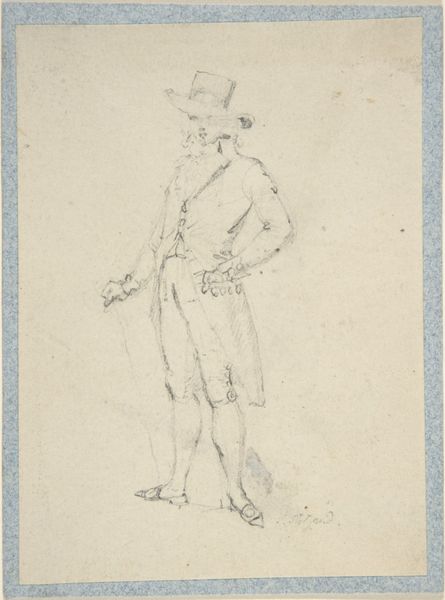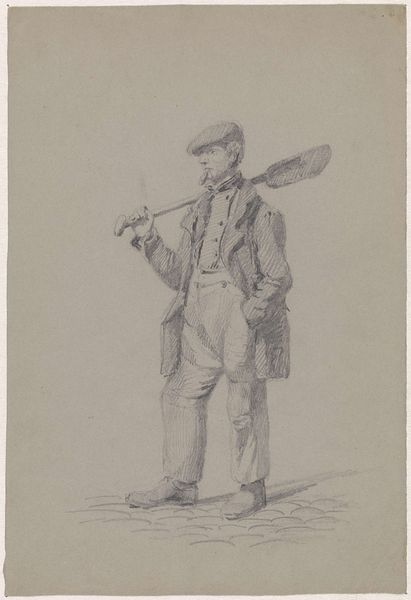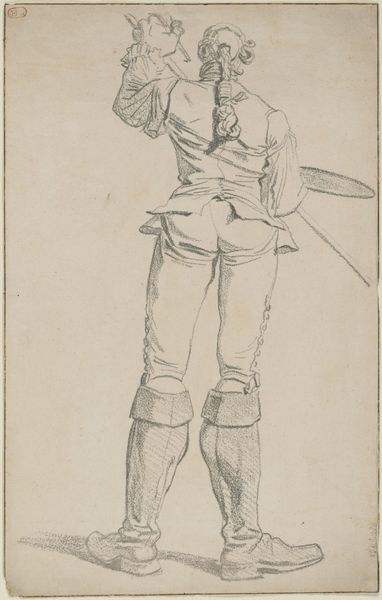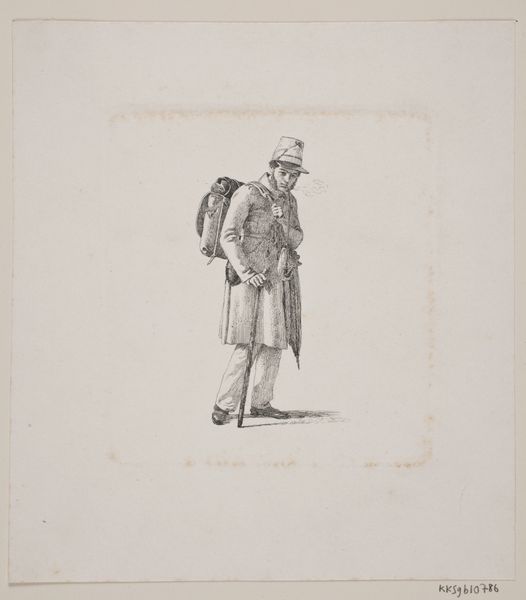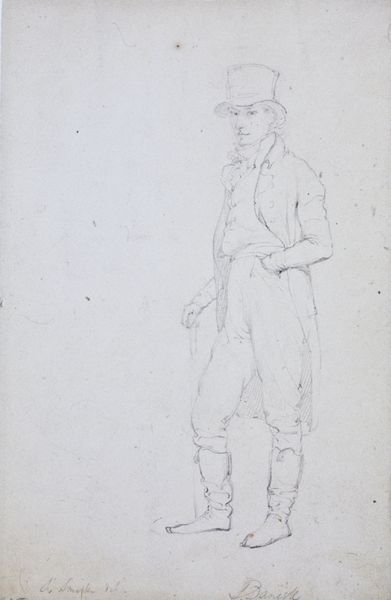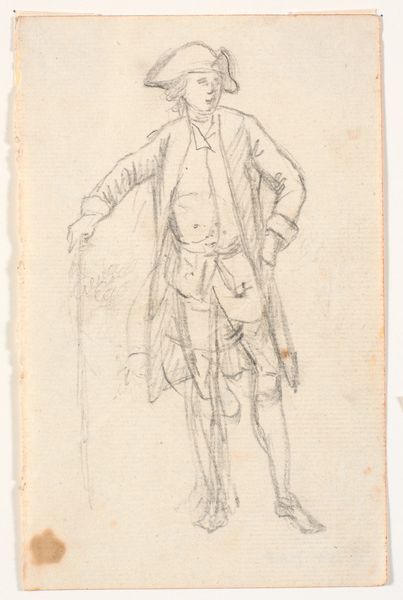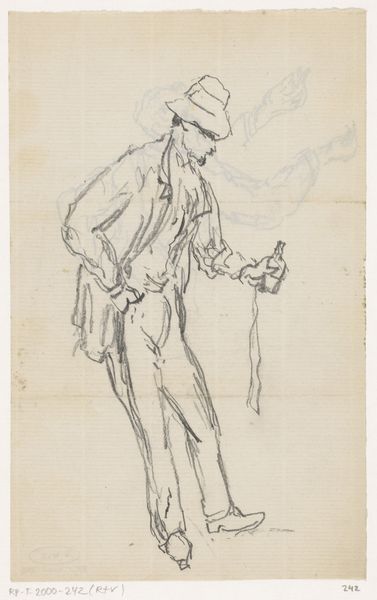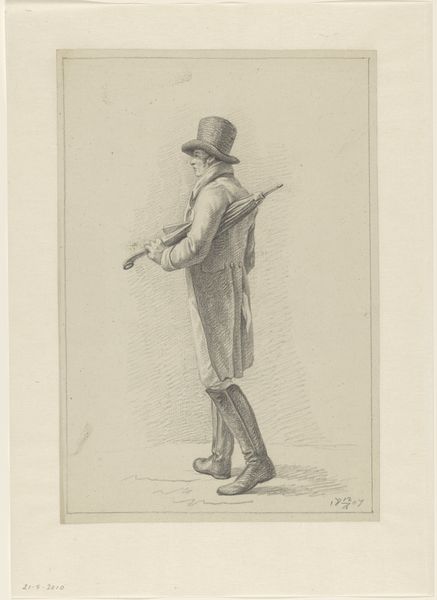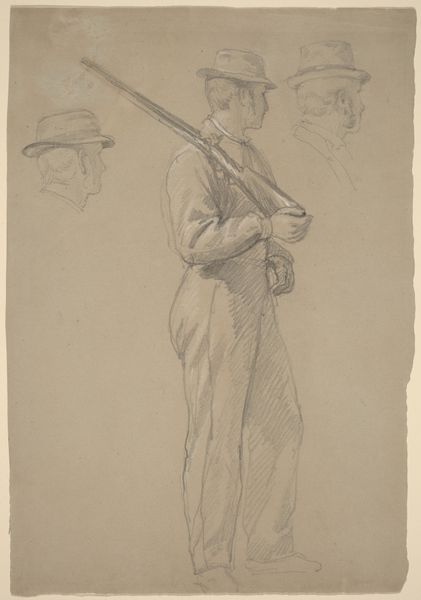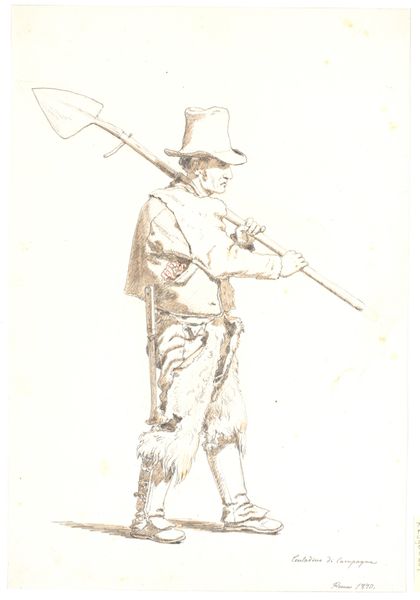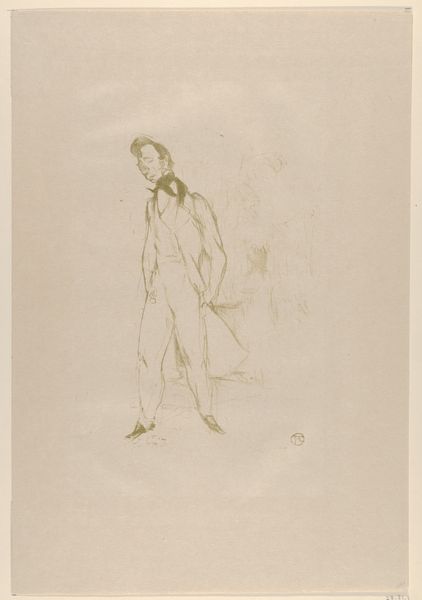
drawing, pencil
#
portrait
#
drawing
#
16_19th-century
#
pencil
#
genre-painting
#
realism
Copyright: Public Domain
Editor: This is Rudolf Gudden’s pencil drawing, “Ein Arbeiter aus der _Großen Spinnerei von Edam_," dating back to around 1894. I’m immediately struck by the sense of quiet dignity in this working man's stance. What stands out to you? Curator: You know, it feels like a secret whispered on paper, doesn’t it? Look closely at the way the light dances – or perhaps more accurately, *hints* at dancing – across his clothing. He is caught in mid-motion. I wonder if he paused for the artist, or if Gudden snatched him unawares from the factory floor. Doesn't the soft shading almost elevate the mundane, the everyday life of a factory worker? Editor: It does, like he's been lifted out of time somehow. I mean, I see realism here, but also…something more. What do you think the artist was trying to communicate? Curator: I think Gudden was drawn, perhaps spellbound, by the intrinsic worth, even grace, he saw in honest labor. Those wooden clogs grounding him. The way his hands are active, even at rest, cradling his tools like they are sacred objects. But, you see that the scene cuts off, yes? We’re left with him and the work to be done – an isolating compression perhaps – the life outside, unknown, unconsidered in this sketch, isn’t it? Editor: So, it's more than just a simple study of a worker? It’s also an intimate observation, filled with empathy? Curator: Precisely! The piece is saying that dignity blooms even amidst the machinery. The artist seems to want to stop the grind, the hum, to capture the humanity that existed inside a Dutch factory at that moment, a breath of peace captured, fleeting as a pencil line. Editor: This has definitely given me a lot to think about regarding what we consider "worthy" subjects in art! Thanks. Curator: My pleasure! Now, go forth and find your own grace in the grit, that inner voice we sometimes forget, yes?
Comments
No comments
Be the first to comment and join the conversation on the ultimate creative platform.
